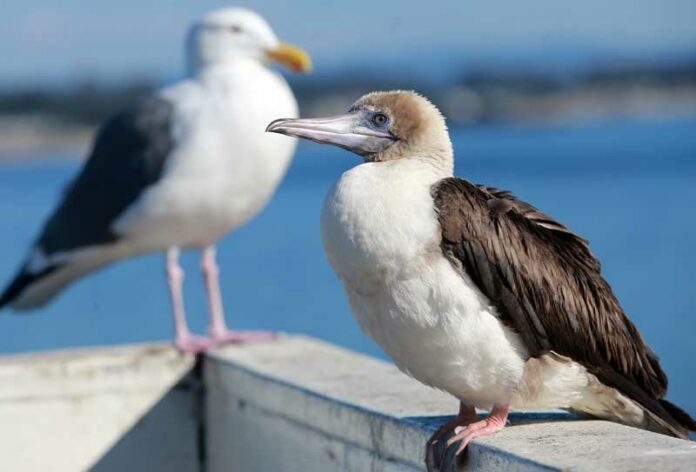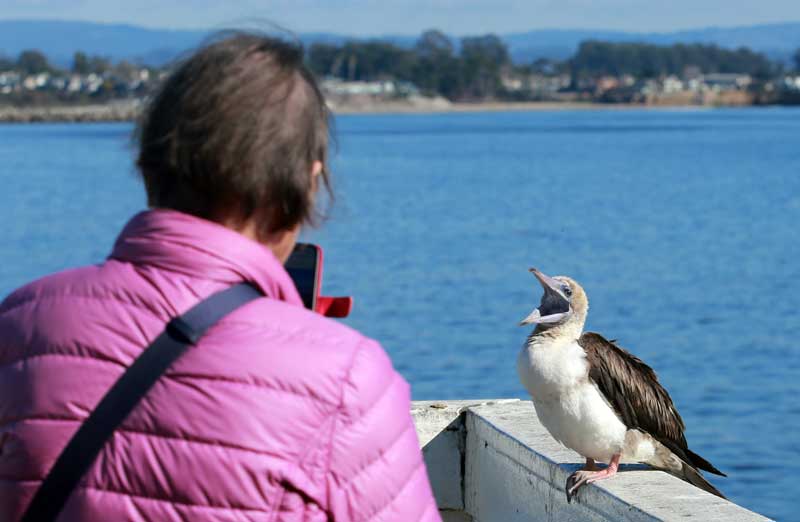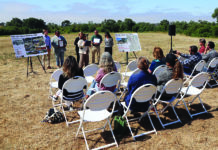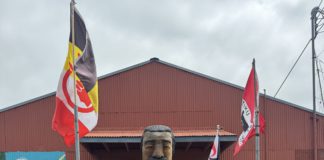
Note: Reporter Erin Malsbury contributed to this report.
After hearing about the arrival of an extremely rare tropical bird in Santa Cruz last week, I immediately texted an out-of-state birder friend.
“I’m so jealous I want to vomit,” they replied.
When avid birdwatchers see a species for the first time, they call it a “lifer”—as in never before seen in their life.
It’s a big deal.
And this small seabird, thousands of miles away from home, was just that. Excited naturalists gathered at the Santa Cruz Wharf this week to glimpse the unusual guest: a red-footed booby.
“This is only the second time this bird has been recorded in the state,” said Clay Kempf, an avid local birder and one of the founders of the Monterey Bay Birding Festival. “About two years ago, another one was spotted on the Cement Ship in Aptos—and that’s it. This is an extremely rare bird in our area.”
Boobies are tropical birds found in the Galapagos and similar climates. They eat fish and small squid. Blue-footed boobies are probably the best-known bird in the family, but five other species exist. Red-footed boobies, the smallest of the bunch, often fly beside boats, waiting for fish to jump out of the water. They can travel up to 90 miles simultaneously, but it’s unclear why this little bird ended up so far from its native range.
Local birders started seeing the red-footed booby in Santa Cruz a little over a week ago. How long it will stay remains to be seen. People have also spotted the visitor in Monterey, but it seems to return to the wharf in the evenings.

Lori Schutz was visiting Los Angeles from Michigan a few days ago when she heard about the strange sighting in Santa Cruz.
“I had to come out and try to find it,” she said while snapping photos of the bird at the wharf on Wednesday evening. “And here it is…This is a great moment for me.”
Kempf describes the bird, which has slightly paler pink feet than the characteristic coral-red color seen in adults, as a “sub-adult.” Scores of other people have visited the wharf in hopes of spotting the feathered guest. Some are die-hard bird watchers, while others are just curious passersby.
“The great thing about birding is it gets you outdoors,” says Kempf. “It doesn’t matter if it’s for five minutes or five hours.”













I did not know trumpty dumpty was in town. LOL !
seriously, there is hope for our bird population. do not drop plastics on the ground !
read the story on another page about the recycling program for agricultural plastic. and if you can get your product purchased in something other than plastic, do so.